

 California
California
 |
| Basilica di San Francesco d'Assisi, Assisi, 2019 |
|---|
The first Missions in Baja California, had been founded by the Jesuits. This was begun in 1697 with the Mission Loreto Conchó. The Mission was adjacent to the Presidio of Loreto, which would be the first of only two Spanish military bases in Baja California, from which Spanish rule would extend over the peninsula -- the next being at Cabo San Lucas. Considering that there would be four Presidios in Alta California -- San Diego, Monterey, San Francisco, and Santa Barbara -- this seems minimal. However, the Spanish expected to meet more European opposition in Upper California than they would in Lower.
 The name "Loreto" occurs because of the great Jesuit regard for the shrine of the Virgin Mary in Loreto, Italy, where the Sancta Casa, the "Holy House," of Mary is supposed to have flown from Nazareth and settled there in 1295. The importance of the cult of Loreto we see centuries later in the Loretto Chapel in Santa Fe, New Mexico.
The name "Loreto" occurs because of the great Jesuit regard for the shrine of the Virgin Mary in Loreto, Italy, where the Sancta Casa, the "Holy House," of Mary is supposed to have flown from Nazareth and settled there in 1295. The importance of the cult of Loreto we see centuries later in the Loretto Chapel in Santa Fe, New Mexico.
Despite their long work in California, the Jesuits came in for special condemnation during the Enlightenment, from which even the Pope was not immune. When the Jesuits were suppressed in 1773, the Dominicans inherited their Missions in Baja California, and the whole of California was neatly divided between the Franciscans and the Dominicans.
Since the Franciscans and Dominicans had long been rivals, both starting as Mendicant Orders in the 13th century, this produced some interesting effects: One of the important Missions, and then great cities, of Alta California was named after St. Francis himself (San Francisco), so the Dominicans had to respond in Baja California with the Mission of Santo Domingo (St. Dominic) de la Frontera. And the Franciscans and Dominicans had rival philosophers, St. Thomas Aquinas and St. Bonaventure, both of whom had received their doctorates (reluctantly, because of suspicion of the mendicant orders) from the University of Paris in the 13th century.
 So, as the Dominicans founded the Mission of Santo Tomás de Aquino in Baja California, the Franciscans founded the Mission of San Buenaventura in Alta California (
So, as the Dominicans founded the Mission of Santo Tomás de Aquino in Baja California, the Franciscans founded the Mission of San Buenaventura in Alta California (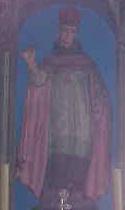 where St. Bonaventure, at right, presides over the altar), which later gave its name to the city of Ventura and to Ventura Blvd., the original route for US 101, in the San Fernando Valley of Los Angeles. San Buenaventura was the last Mission personally founded (1782) by Father Serra (d.1784), who had himself been a professor of philosophy and theology.
where St. Bonaventure, at right, presides over the altar), which later gave its name to the city of Ventura and to Ventura Blvd., the original route for US 101, in the San Fernando Valley of Los Angeles. San Buenaventura was the last Mission personally founded (1782) by Father Serra (d.1784), who had himself been a professor of philosophy and theology.
Another important Franciscan figure is "Santa Clara de Asís," St. Clare of Assisi, who left her family to join St. Francis and founded the Franciscan order of nuns, the "Poor Clares." Serra died and was buried at the Mission in Carmel. A modest monument now exists over his grave, but after the Mission had been abandoned for some years,
 |
| Basilica di Santa Chiara (Santa Clara), Assisi, 2019 |
|---|
Although Serra and the Missions have been understandably criticized for their impact on the population and culture of the California Indians, such effects either would have been regretted by them (i.e. the deaths from disease in the population) or would have been incomprehensible (i.e. the idea that a "heathen" native culture would have been valuable in its own right). Such impacts, both demographic and cultural, were inevitable in any case -- California Indians now tend to consciously combine their own traditions with the Mission heritage. The idea that the Spanish rounded up California Indians and converted them by force is simply untrue, yet it gets repeated. The California Presidios were usually well separated from the Missions precisely because the Fiars knew that there was often friction between Indians and Spanish soldiers. Serra himself would often travel to a new site with only a single escort, relying on preaching, not force. However, the Spanish did have practices, like locking young women up at night, to protect their virtue, that would help spread disease. This was not, to say the least, intentional. Indians in revolt against the Spanish sometimes actually protected the Fiars in their midst.
As it was, the devout activity of the Franciscans in the last 50 years of Spanish rule created a historical geography and romance for California that is inescapable: Numerous California cities, from San Francisco and San Diego to San Luis Obispo and Carmel,  and several geographical features, like the San Fernando Valley and San Gabriel Mountains, are still named after the original Missions.
and several geographical features, like the San Fernando Valley and San Gabriel Mountains, are still named after the original Missions.  Although freeway building has relocated or abolished parts of the original road, US 101 still follows much of the original El Camino Real, the Royal Road that was laid out between the Missions, which themselves were supposed to be spaced a day's journey apart. Since the separation could be forty to almost sixty miles, this might really be a rather demanding day's journey by foot, but then the "day's journey" is sometimes said to have been meant by horse. Today, the separation means less than an hour drive by car, barring traffic problems. US 101 now ends in downtown Los Angeles, but Interstate 5 continues the route south to Mexico.
Although freeway building has relocated or abolished parts of the original road, US 101 still follows much of the original El Camino Real, the Royal Road that was laid out between the Missions, which themselves were supposed to be spaced a day's journey apart. Since the separation could be forty to almost sixty miles, this might really be a rather demanding day's journey by foot, but then the "day's journey" is sometimes said to have been meant by horse. Today, the separation means less than an hour drive by car, barring traffic problems. US 101 now ends in downtown Los Angeles, but Interstate 5 continues the route south to Mexico.
While the southernmost Mission, at San Diego, was founded first, there was no particular order in which the other Missions were founded,
| # | Mission | founded | location | |
|---|---|---|---|---|
| 1 | 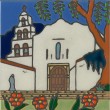 | Basilica San Diego de Acalá | 16 July 1769 | San Diego |
| Asistencia Santa Ysabel | 1818 | Santa Ysabel | ||
| 18 |  | San Luis Rey de Francia | 13 June 1798 | Oceanside |
| Asistencia San Antonio de Pala | 1815 | Pala | ||
| 7 | 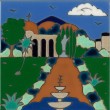 | San Juan Capistrano | 1 November 1776 | San Juan Capistrano |
| 4 |  | San Gabriel Arcángel | 8 September 1771 | San Gabriel |
| 17 | 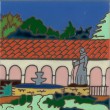 | San Fernando Rey de España | 15 June 1798 | Los Angeles |
| 9 | 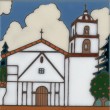 | San Buenaventura | 32 March 1782 | Ventura |
| 10 | 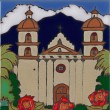 | Santa Bárbara | 4 December 1786 | Santa Barbara |
| 19 | 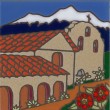 | Santa Inés | 17 September 1804 | Solvang |
| 11 | 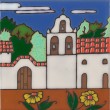 | La Purísima Concepción de María Santísima | 8 December 1787 | Lompoc |
| 5 |  | San Luis Obispo de Tolosa | 1 September 1772 | San Luis Obispo |
| 16 | 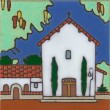 | San Miguel Arcángel | 25 July 1797 | San Miguel |
| 3 | 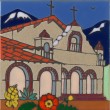 | San Antonio de Padua | 14 July 1771 | Fort Hunter Liggett |
| 13 | 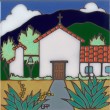 | María Santísima Nuestra Señora Dolorisima de la Soledad | 9 October 1791 | Soledad |
| 15 |  | San Juan Bautista | 24 June 1797 | San Juan Bautista |
| 2 | 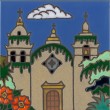 | San Carlos Borromeo de(l Rio) Carmelo | 3 June 1770 | Carmel |
| 12 | 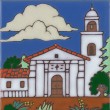 | Santa Cruz | 28 August 1791 | Santa Cruz |
| 8 | 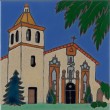 | Santa Clara de Asís | 12 January 1777 | Santa Clara |
| 14 | 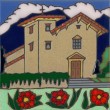 | San José de Guadalupe | 11 June 1797 | Fremont |
| 6 | 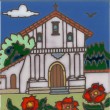 | San Francisco de Asís Arroyo de los Dolores | 9 October 1776 | San Francisco |
| 20 | 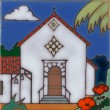 | San Rafael Arcángel | 14 December 1817 | San Rafael |
| 21 |  | San Francisco de Solano | 4 July 1823 | Sonoma |
After Mexican Independence (1821), between 1833 and 1836 the Missions were all secularized. This meant that, while the Church was often left operating, the land and assets of the Missions were confiscated and/or sold off. This was supposed to mean that the local Christianized Indians would take over, but the assets (cattle, etc.) were then usually dispersed or neglected, and the sequel was that in the 1840's the Missions were often abandoned. Every Mission but Santa Bárbara (and perhaps Santa Inés) was abandoned at one time or another. After the Mexican Cession and Statehood for California, in 1855 Mission lands began to be returned by the United States Government to the Catholic Church. Most were returned between 1858 and 1865, often under the signature of no less than Abraham Lincoln.
La Purísima was returned to the Church in 1874 but was so ruined that the Church sold the land. In 1935 the site was bought by the State of California, which restored the Mission as a State Park. The remote San Antonio de Padua could not be sold and was simply abandoned in 1882. It was first restored 1903-1907 and more extensively rebuilt in 1948-1949, with, of all things, the help of William Randolph Hearst, who built a large house nearby (now a hotel for visitors to Ft. Hunter Liggett). While the Church never returned to Purísima, Franciscans did return to San Antonio, and the church there is in active use. From the full name of La Purísima are doubtless derived the names of nearby Point Conception and the city of Santa Maria. Another Mission that is now a State Park is at Sonoma, and it is not clear to me that the Mission church is in use. Other characteristics of individual Missions are discussed at Visiting the Missions.
The small images seen here with the Missions are what Pacific Blue Tile sells as glazed tiles. At one point I was hoping that the tiles could be used in flooring, but they are not rated for that. They are suitable for wall tiling, hanging, or as hot plates.
| Spanish Alta California, 1769-1822 | |
|---|---|
| Military Governors, Nueva California | |
| Gaspar de Portolà | 1769-1770 |
| Pedro Fages | 1770-1774 |
| Fernando Rivera y Moncada | 1774-1777 |
| Governors (Intendants) of Las Californias | |
| Felipe de Neve | 1777-1782 |
| Pedro Fages | 1782-1791 |
| José Antonio Roméu | 1791-1792 |
| José Joaquín de Arrillaga | acting, 1792-1794 |
| Diego de Borica | 1794-1800 |
| Pedro de Alberni | acting, 1800 |
| José Joaquín de Arrillaga | 1800-1804 |
| San Diego Earthquake, 6.5, 1800 | |
| Governors (Intendants) of Alta California | |
| José Joaquín de Arrillaga | 1804-1814 |
| Wrightwood Earthquake, 6.9+, Santa Barbara Earthquake, 7.1, 1812 | |
| José Darío Argüello | acting, 1814-1815 |
| Pablo Vicente de Solá | 1815-1822 |
 One of the most famous associations of all the Missions is the tradition that migrating swallows return from Argentina to their mud-daub nests at San Juan Capistrano on St. Joseph's Day, March 19th. They were then supposed to leave on October 23, the feast day of St. John of Capestrano (the Italian spelling), after whom the Mission was named. The presence of the swallows was first noted in 1777. Unfortunately, restoration work recently disturbed the nests, and the birds began to relocate elsewhere.
One of the most famous associations of all the Missions is the tradition that migrating swallows return from Argentina to their mud-daub nests at San Juan Capistrano on St. Joseph's Day, March 19th. They were then supposed to leave on October 23, the feast day of St. John of Capestrano (the Italian spelling), after whom the Mission was named. The presence of the swallows was first noted in 1777. Unfortunately, restoration work recently disturbed the nests, and the birds began to relocate elsewhere.
The "San Fernando Rey de España" was Ferdinand III of Castile and León (1217-1252), who conquered the heartland of Islâmic Andalusia. "San Luis Rey de Francia," on the other hand, was St. Louis IX of France (1226-1270), after whom the city of St. Louis, Missouri, is also named. "San Luis Obispo de Tolosa" was a 13th century Bishop of Toulouse and Franciscan monk, Louis of Anjou, a grandson of Charles I of Anjou. This means he was a great-nephew of St. Louis IX, as shown in the linked Anjevian genealogy.
Not counted among the traditional 21 Missions is that of San Antonio de Pala, originally a branch or asistencia of San Luis Rey de Francia. Today it is the only Mission that still ministers directly to Native Americans, located at the seat of the Pala Indian Reservation, across the road from the new Pala Tribal Casino. The Pala tribe is thus served by the oldest institution of California Christian religion -- the Mission -- and the newest institution of California Indian income -- gambling.
| Governors of Mexican Alta California, 1822-1847 | |
|---|---|
| Luis Antonio Argüello | 1822-1825 |
| José Maria de Echeandía | 1825-1831 |
| Manuel Victoria | 1831-1832 |
| Pío Pico | 1832 |
| Augustín Zamorano & José Maria de Echeandía | 1832-1833 |
| José Figueroa | 1833-1835 |
| José Castro | acting, 1835 |
| Mariano Chico | 1836 |
| Nicolas Gutierrez | acting, 1836 |
| Juan Bautista Alvarado | 1836-1837 |
| Carlos Antonio Carrillo | 1837-1838 |
| Juan Bautista Alvarado | 1838-1842 |
| San Francisco Earthquake, 6.7+, 1838 | |
| Manuel Micheltorena | 1842-1845 |
| Pío Pico | 1845-1846 |
| José María Flores | Los Angeles, 1846-1847 |
| Andrés Pico | Los Angeles, 1847 |
| 14,000 Ft. Mountains in the 48 States | ||
|---|---|---|
| Mt. Whitney | 14,494 ft. | Sierra Nevada |
| Mt. Elbert | 14,433 ft. | Sawatch Range |
| Mt. Massive | 14,421 ft. | Sawatch Range |
| Mt. Harvard | 14,420 ft. | Sawatch Range |
| Mt. Ranier | 14,410 ft. | Cascade Range |
| Mt. Williamson | 14,375 ft. | Sierra Nevada |
| Blanca Peak | 14,345 ft. | Sangre de Cristo |
| La Plata Peak | 14,336 ft. | Sawatch Range |
| Uncompahgre Peak | 14,309 ft. | San Juan Mountains |
| Crestone Peak | 14,294 ft. | Sangre de Cristo |
| Mt. Lincoln | 14,286 ft. | Mosquito Range |
| Grays Peak | 14,270 ft. | Front Range |
| Mt. Antero | 14,269 ft. | Sawatch Range |
| Torreys Peak | 14,267 ft. | Front Range |
| Castle Peak | 14,265 ft. | Elk Mountains |
| Quandary Peak | 14,265 ft. | Mosquito Range |
| Mt. Evans | 14,264 ft. | Front Range |
| Longs Peak | 14,255 ft. | Front Range |
| Mt. Wilson | 14,246 ft. | San Juan Mountains |
| White Mt. Peak | 14,246 ft. | White Mountains |
| North Palisade | 14,242 ft. | Sierra Nevada |
| Mt. Cameron | 14,238 ft. | Mosquito Range |
| Mt. Shavano | 14,229 ft. | Sawatch Range |
| Mt. Belford | 14,197 ft. | Sawatch Range |
| Crestone Needle | 14,197 ft. | Sangre de Cristo |
| Mt. Princeton | 14,197 ft. | Sawatch Range |
| Mt. Yale | 14,196 ft. | Sawatch Range |
| Crooks Peak | 14,180 ft. | Sierra Nevada |
| Mt. Bross | 14,172 ft. | Mosquito Range |
| Kit Carson Peak | 14,165 ft. | Sangre de Cristo |
| Mt. Shasta | 14,162 ft. | Cascade Range |
| El Diente Peak | 14,159 ft. | San Juan Mountains |
| Point Success | 14,158 ft. | Cascade Range |
| Maroon Peak | 14,156 ft. | Elk Mountains |
| Mt. Tabeguache | 14,155 ft. | Sawatch Range |
| Mt. Oxford | 14,153 ft. | Sawatch Range |
| Mt. Sill | 14,153 ft. | Sierra Nevada |
| Mt. Sneffels | 14,150 ft. | San Juan Mountains |
| Mt. Democrat | 14,148 ft. | Mosquito Range |
| Capitol Peak | 14,130 ft. | Elk Mountains |
| Liberty Cap | 14,112 ft. | Cascade Range |
| Pikes Peak | 14,110 ft. | Front Range |
| Snowmass Mountain | 14,092 ft. | Elk Mountains |
| Mt. Russell | 14,088 ft. | Sierra Nevada |
| Mt. Eolus | 14,083 ft. | San Juan Mountains |
| Windom Peak | 14,082 ft. | San Juan Mountains |
| Polemonium Peak | 14,080 ft. | Sierra Nevada |
| Challenger Point | 14,081 ft. | Sangre de Cristo |
| Mt. Columbia | 14,073 ft. | Sawatch Range |
| Missouri Mountain | 14,067 ft. | Sawatch Range |
| Humboldt Peak | 14,064 ft. | Sangre de Cristo |
| Mt. Bierstadt | 14,060 ft. | Front Range |
| Sunlight Peak | 14,059 ft. | San Juan Mountains |
| Split Mountain | 14,058 ft. | Sierra Nevada |
| Handies Peak | 14,048 ft. | San Juan Mountains |
| Culebra Peak | 14,047 ft. | Sangre de Cristo |
| Ellingwood Point | 14,042 ft. | Sangre de Cristo |
| Mt. Lindsey | 14,042 ft. | Sangre de Cristo |
| Little Bear Peak | 14,037 ft. | Sangre de Cristo |
| Mt. Sherman | 14,036 ft. | Mosquito Range |
| Redcloud Peak | 14,034 ft. | San Juan Mountains |
| Mt. Langley | 14,026 ft. | Sierra Nevada |
| Conundrum Peak | 14,022 ft. | Elk Mountains |
| Mt. Tyndall | 14,019 ft. | Sierra Nevada |
| Pyramid Peak | 14,018 ft. | Elk Mountains |
| Wilson Peak | 14,017 ft. | San Juan Mountains |
| Wetterhorn Peak | 14,015 ft. | San Juan Mountains |
| North Maroon Peak | 14,014 ft. | Elk Mountains |
| San Luis Peak | 14,014 ft. | San Juan Mountains |
| Middle Palisade | 14,012 ft. | Sierra Nevada |
| Mt. Muir | 14,012 ft. | Sierra Nevada |
| Mt. of the Holly Cross | 14,005 ft. | Sawatch Range |
| Thunderbolt Peak | 14,003 ft. | Sierra Nevada |
| Huron Peak | 14,003 ft. | Sawatch Range |
| Sunshine Peak | 14,001 ft. | San Juan Mountains |
The highest point in the Western Hemisphere is Mt. Aconcagua in the Andes in Argentina, at 22,834 feet. The highest point in North America, and in the United States, is Mt. McKinley in Alaska, at 20,320 feet. President Obama renamed Mt. McKinley "Denali" by Executive Order, even though its name is established by law, which cannot be overriden by an Executive Order. Nothing seems to have been done about this. "Denali" is the name in a local Alaskan language, but note is rarely, or ever, taken of what language that is. Other mountains up to that height can be found in Alaska, Mexico, and Canada. The highest point in the 48 States, only the 29th highest in North America, is Mt. Whitney in California.
The table at left compares mountains in the 48 States that are 14,000 feet or greater. Those on a red background are in California, those in a blue background are in Washington State, and those on a white background are in Colorado. There are relatively few of these in California, all in a relatively short stretch of the Sierra Nevada, with the sole exceptions of White Mountain Peak, which is in the White Mountains, just across the Owens Valley from the Sierra, and the awesome Mt. Shasta, which is a great volcano in the Cascade Range, like Mt. Ranier in Washington State (Point Success and Liberty Cap are both lesser peaks of Mt. Ranier). Otherwise, most of these peaks are in Colorado.
I don't know if this is an exhaustive list of 14,000 foot peaks in the Sierra. Californians don't seem too interested, and I've never seen any mention, let alone a list, of such peaks, while the "14ers" come in for regular comment in Colorado, where there are said to be between 54 and 58 of them (57 are given here -- part of the disagreement seems to be about what constitutes a distinct separate peak). These are distributed between the Front Range, the Sawatch Range, the Sangre de Cristo Range, the Tenmile-Mosquito Range, the San Juan Mountains, and the Elk Mountains. The abundance of such high mountains in Colorado is especially striking since the States around Colorado, which are also in the Rockies and very mountainous -- New Mexico, Wyoming, Montana, Idaho, Utah, and Arizona -- have no peaks over 14,000 feet. Colorado is the "Roof of the Rockies."
In several ways this is curious. Colorado is a long way from the ocean and, more importantly, from any tectonic plate boundaries. Since mountain building is now understood in terms of plate tectonics, where did the Rockies come from? But it is also noteworthy that, high as Colorado seems for the 48 States, it is really not all that high. 14,000 feet looks good if all we are doing is comparing it to Australia or Western Europe, but, as already noted, it doesn't seem that significant in comparison to Alaska, South America, or, to say the least, Central Asia (where there are five ranges, even besides the Himalayas, that have peaks higher than 24,000 feet). This makes it look like whatever made the Rockies is a process now inactive. The Rockies are fading.
A brief discussion of this can be found in John McPhee's great Assembling California [The Noonday Press, New York, 1993], part of his series of four (or five) books on geology (starting with the classic Basin and Range, 1981). McPhee says to one of his geologist friends that if the Colorado Plateau is analogous to the Tibetan Plateau, and if the Tibetan Plateau (and all those Central Asian mountain ranges) is the result of the collision of India with Asia, where is the India to the North American Tibet? His thought is that it was Alaska. The geologist agrees. Some large body collided with North America, pushing up the Rockies and the Colorado Plateau, but then was sliced off and carried north by the Pacific or some earlier tectonic Plate. What was carried north ended up smeared along the coast or attached to Alaska.
Once the continent-to-continent collision was over, then North America was riding up over oceanic plate, which pushed up mountains rather like the Andes. Those were probably in Nevada, and erosion from them laid down the sediments full of gold that later became the Gold Rush country in the Sierra. When the actual East Pacific Rise was overridden, the present situation of the growing Gulf of California to the south and the Basin and Range province to the north was created. The Sierra is the western wall of the Basin and Range, as the most dramatic basins are the Owens Valley, Saline Valley, Panamint Valley, and Death Valley, all in California -- though the province, of course, extends all up through Nevada.
Meanwhile, western California is on the Pacific Plate, headed north-west, as North America itself is still headed west. The Coastal Ranges are the long seam of the San Andreas Fault, along which most of the lateral motion is evident. This has made for the earthquakes that are so much a part of California history, from the earliest days of the Missions to the very active 1990's. In the 70's, there was a flurry of books about how California was going to sink into the ocean. Now it is pretty obvious that sinking is something that continents don't do. Los Angeles ending up near San Francisco, or the Gulf of California extending to Lovelock, Nevada, is more like it. Even these are in a future many millions of years down the line. The earthquakes that will lead to it, although producing geographical changes measured in little more than feet at a time, nevertheless release the energy of many nuclear weapons, visiting damage across large areas -- the Great San Francisco Earthquake of 1906 threw down adobe walls at Mission San Antonio de Padua, 138 miles away.
| President of the California Republic | |
|---|---|
| William B. Ide | Sonoma, 1846 |
| US Military Governors of California | |
| John Drake Sloat | 1846 |
| Robert Field Stockton | 1846-1847 |
| John C. Frémont | 1847 |
| Stephen W. Kearny | 1847 |
| Richard Barnes Mason | acting, 1847-1849 |
| Persifor Frazer Smith | 1849 |
| Bennett Riley | 1849 |
California is thus rather more geologically active than Colorado, though most of the energy is not going into mountain building. Where some energy is thus directed is in Southern California. There is a twist in the San Andreas Fault, associated again with the plateau of the Mojave Desert that obscures the link between the Imperial Valley and Death Valley. Between where the Fault turns west and then turns back north are the Transverse Ranges, especially the San Bernardino and San Gabriel Mountains. As the tectonic plates grind against each other, these ranges are thrust up, on what are called, appropriately enough, "thrust faults."
| Governors of the State of California | ||
|---|---|---|
| 1 | Peter Hardeman Burnett (D) | 1849-1851 |
| 2 | John McDougall (D) | 1851-1852 |
| 3 | John Bigler (D) | 1852-1856 |
| 4 | J. Neeley Johnson (A) | 1856-1858 |
| Parkfield/Fort Tejon Earthquake, 7.9, 1857 | ||
| 5 | John Weller (D) | 1858-1860 |
| 6 | Milton Latham (D) | 1860-1860 |
| 7 | John Downey (D) | 1860-1862 |
| 8 | Leland Stanford (R) | 1862-1863 |
| 9 | Frederick Low (R) | 1863-1867 |
| 10 | Henry Haight (D) | 1867-1871 |
| Hayward Earthquake, 6.8+, 1868 | ||
| 11 | Newton Booth (R) | 1871-1875 |
| Lone Pine Earthquake, 7.6+, 1872 | ||
| 12 | Romualdo Pacheco (R) | acting, 1875 |
| 13 | William Irwin (D) | 1875-1880 |
| 14 | George Perkins (R) | 1880-1883 |
| Parkfield Earthquake, 5.5+, 1881 | ||
| 15 | George Stoneman (D) | 1883-1887 |
| 16 | Washington Bartlett (D) | 1887-1887 |
| 17 | Robert Waterman (R) | 1887-1891 |
| 18 | Henry Markham (R) | 1891-1895 |
| 19 | James Budd (D) | 1895-1899 |
| 20 | Henry Gage (R) | 1899-1903 |
| Parkfield Earthquake, 5.5+, 1901 | ||
| 21 | George Pardee (R) | 1903-1907 |
| Great San Francisco Earthquake, 7.9, 1906 | ||
| 22 | James Gillett (R) | 1907-1911 |
| 23 | Hiram Johnson (R) | 1911-1917 |
| 24 | William Stephens (R) | 1917-1923 |
| Parkfield Earthquake, 5.5+, 1922 | ||
| 25 | Friend Richardson (R) | 1923-1927 |
| 26 | C.C. Young (R) | 1927-1931 |
| 27 | James Rolph (R) | 1931-1934 |
| Long Beach Earthquake, 6.4, 1933 | ||
| 28 | Frank Merriam (R) | 1934-1939 |
| Parkfield Earthquake, 5.5+, 1934 | ||
| 29 | Culbert Olson (D) | 1939-1943 |
| 30 | Earl Warren (R) | 1943-1953 |
| Kern County/Tehachapi Earthquake, 7.5, 1952 | ||
| 31 | Goodwin Knight (R) | 1953-1959 |
| 32 | Edmund G. "Pat" Brown, Sr. (D) | 1959-1967 |
| Parkfield Earthquake, 5.5+, 1966 | ||
| 33 | Ronald Reagan (R) | 1967-1975 |
| Sylmar/San Fernando Earthquake, 6.6, 1971 | ||
| 34 | Edmund G. "Jerry" Brown, Jr. (D) | 1975-1983 |
| 35 | George Deukmejian (R) | 1983-1991 |
| Coalinga Earthquake, 6.5, 1983; Whittier Narrows Earthquake, 5.9, 1987; Loma Prieta Earthquake, 6.9, 1989 | ||
| 36 | Peter "Pete" Wilson (R) | 1991-1999 |
| Cape Mendocino Earthquake, 7.2, 1992; Landers Earthquake, 7.3, Big Bear Earthquake, 6.5, 1992; Northridge Earthquake, 6.7, 1994 | ||
| 37 | Joseph G. "Gray" Davis (D) | 1999-2003 |
| Hector Mine Earthquake, 7.1, 1999; | ||
| 38 | Arnold A. Schwarzenegger (R) | 2003-2011 |
| San Simeon Earthquake, 6.5, 2003; Parkfield Earthquake, 6.0, 2004; Eureka Earthquake, 6.5, 2010 | ||
| 39 | Edmund G. "Jerry" Brown 🤡 (D) | 2011- 2019 |
| 40 | Gavin Newsom 🤡 (D) | 2019- present |
Coloradans might laugh at Mt. San Gorgonio being considered an impressive mountain, but standing below Sea Level at Indio, you are looking up at all 11,499 feet of the mountain, while standing at a mile high in Denver, Mt. Evans, for instance, only rises a relative 9000 feet higher. From Leadville, above 10,000 feet, Mt. Elbert, the highest point in Colorado, is only 4233 feet higher. Even Coloradans sometimes have trouble being impressed by Mt. Elbert. On the other hand, Mt. Whitney is 10,794 feet higher than Lone Pine, through which all traffic passes in the Owens Valley. It is actually Hawaiians who might sneer at this. Standing at Sea Level in Hilo, you can look up to the 13,796 foot summit of Mauna Kea and the 13,677 foot summit of Mauna Loa. Unfortunately, the great Hawaiian "shield" volcanes rise so gradually that it is very hard to tell just how big they are. An abrupt rise gives a better sense of height, even when the difference isn't all that great. Thus, the Sandia Mountains, rising to 10,447 feet above the mile-high Albuquerque, are not all that high and are not relatively all that much higher than the city; but it looks like they go straight up. A 5000 foot wall gets your attention.
 This page now features all the Spanish, Mexican, and American executives of California. The Spanish capital of Upper California settled at Monterey, whose harbor was identified as suitable before the discovery of San Francisco Bay, which might have been better. There are so many Mexican Governors of California, during not much more than 20 years of rule, because there was some difficulty enforcing Mexican authority in the province, and the local Californios, like Pío Pico, were sometimes in revolt. These problems had only recently been resolved, and Pico himself had become Governor, when the Mexican-American War began. American settlers in the north declared the "Bear Flag Republic" in 1846, while late in the year John C. Frémont moved south toward Mexican forces. A battle that never happened that nevertheless is of some interest was over Santa Barbara. Frémont thought that Andrés Pico was holding Gaviota Pass, where US 101 still crosses the Santa Ynez Mountains. To avoid him, Frémont entered Santa Barbara over the San Marcos Pass, still crossed by State Highway 154. Pico was actually in Los Angeles, and subsequently, on 13 January 1847, surrendered his forces and California at the Campo de Cahuenga -- where on 20 February 1845 Pío Pico had repulsed the Mexican Governor Manuel Micheltorena.
This page now features all the Spanish, Mexican, and American executives of California. The Spanish capital of Upper California settled at Monterey, whose harbor was identified as suitable before the discovery of San Francisco Bay, which might have been better. There are so many Mexican Governors of California, during not much more than 20 years of rule, because there was some difficulty enforcing Mexican authority in the province, and the local Californios, like Pío Pico, were sometimes in revolt. These problems had only recently been resolved, and Pico himself had become Governor, when the Mexican-American War began. American settlers in the north declared the "Bear Flag Republic" in 1846, while late in the year John C. Frémont moved south toward Mexican forces. A battle that never happened that nevertheless is of some interest was over Santa Barbara. Frémont thought that Andrés Pico was holding Gaviota Pass, where US 101 still crosses the Santa Ynez Mountains. To avoid him, Frémont entered Santa Barbara over the San Marcos Pass, still crossed by State Highway 154. Pico was actually in Los Angeles, and subsequently, on 13 January 1847, surrendered his forces and California at the Campo de Cahuenga -- where on 20 February 1845 Pío Pico had repulsed the Mexican Governor Manuel Micheltorena.
Governors of California have become a Chief Justice of the Supreme Court (Earl Warren) and a President of the United States (Ronald Reagan). In 2003 California saw the extraordinary recall of the unpopular, although recently reelected, Governor Gray Davis.
On a ballot of over 100 candidates, Austrian muscle builder, movie star, and Kennedy in-law Arnold Schwarzenegger gained a majority of the vote. With the State recently dominated by socialist Democrats and powerful, radicalized, and irresponsible public employee unions, Arnold, the Gubernator, was going to have a tough fight to return the State to rational (and American) principles of government.
As of 2008, Arnold unfortunately failed to do this. After a brief attempt at reform, with ill considered ballot initiatives rushed into a special election, where all his enemies would be the most likely to vote, Arnold pretty much gave up and threw in with the Democrats. The result of this has been a continued hemorrhage of State spending, even as revenues decline (with a recession resulting from the home mortgage market collapse, and any sensible businessman still leaving the State), and a growing temptation to accept the perpetual desire of the Democrats to raise taxes.
Since Arnold wouldn't be running for re-election, he didn't need to worry about becoming the George H.W. Bush of California politics. Even worse, Arnold suddenly became a Believer in catastrophic Climate Change and was eager to burden the economy with massive carbon, i.e. energy, reduction mandates. Like many Country Club Republicans, he has become obsessed with ingratiating himself with people who are never going to like him anyway.
As Arnold's governorship began, even I had great hopes. I saw him show up at a Reason Foundation banquet at the Beverly Wilshire Hotel to honor Milton (d.2006) and Rose (d.2009) Friedman, some time before their deaths. Arnold came to pay tribute to the Friedmans, who had inspired him when he was getting started in America. Perhaps it is just as well that Milton did not live to see what would come of Arnold's years.
As Governor, Arnold's greatest failure may have been that he was unable to articulate what was wrong with the Democrat government that was busy flying the State into the ground. Instead, he himself saw one of his principle accomplishments as a Communist Command Economy "Global Warming" bill that will help bury the State deeper and deeper. When an Initiative was put on the 2010 ballot (Prop 23) that simply wanted to suspend the bill until the economy recovers, Arnold campaigned against it, in league with all his Hollywood leftist friends, and was rewarded when the No vote came in at 61%. This will further help rip the remaining guts out of the State economy.
The movie industry journal Daily Variety reported on November 4, two days after the election:
Verily, they have their reward.
Now we learn that as Arnold was cooperating with the Democrats in destroying the State, he had also been busy for years destroying his marriage. This is a sad business in its own right, since the public face of his marriage with Maria Shriver, who had four children with him, had always seemed strong and happy -- they had recently hit their 25th anniversary. We have seen before how false such representations can be, and now the dam has burst. We are even hearing that Arnold, like Bill Clinton, used State police to deliver women to him in Maria's absence. I hope he enjoyed his time as Governor, because he may not be able to put back together a life like he had.
When the new Catholic Cathedral of Los Angeles was opened in 2002, I went on a tour of it. We were shown the crypts that Arnold had already bought for himself and Maria. Perhaps they won't be using those now; and Arnold has actually made statements that make him sound like an actual atheist. Wow. Arnold betrays Milton Friedman, betrays his wife, betrays his Party, and then betrays his Faith. Has he ever wondered where he went wrong? It might do him good to return to the Church and go to Confession. He'll have a lot to confess.
Arnold's failure of leadership may have contributed to the nature of the results of the 2010 election. But that can't be the whole story. A California majority that returns the dinosaur Jerry Brown to Sacramento and reelects the witless and execrable Barbara Boxer to six more years in Washington has all but lost its mind.
Substantively, it looks like a tipping point has been reached in California, as previously in Massachusetts and New York -- and apparently now in Nevada -- where a majority of voters have been converted into the form of the morally and intellectually corrupted French or even the Greek electorate.
The socialist propaganda of "public education" has succeeded in destroying capitalism in the hearts of the majority, and they are no longer Americans in any traditional sense. Indeed, many of them do not want to be -- in some cases because they want California returned to Mexico (with all the joy and success of life there [note]).
Thus, after the Democrats have dominated and corrupted State government for years, and Arnold turned out to be just another RINO (cementing his status as a full RINO Traitor by endorsing Kamala Harris in the 2024 Presidential Election), the socialists returned to even greater dominance in Sacramento in 2010, despite "moderate" and professionally successful Republican women candidates like Meg Whitman and Carly Fiorina for Governor and Senator, respectively. They were both viciously attacked just for being in business, even while their opposition (Brown & Boxer) have never held a job outside of politics or run a business themselves -- something that has not prevented Boxer, at least, from enjoying great wealth -- like a lot of these "public servant" politicians.
Few people seem very curious how politicians, receiving a supposedly modest income, end up consistently wealthy. Even when it was revealed that "insider trading" laws didn't apply to Members of Congress, who took advantage of that, there was little shock, anger, or indignation from the "mainstream" media, and nothing like the warranted fallout. Millionaire Democrats railing about "inequality" embody all the bitter irony of our day.
This contrasts with the results of the 2010 election in a place like Michigan. After driving business out of the State for years, to the point where large areas of Detroit and other cities have simply been abandoned (with suggestions to return them to Nature), the voters of Michigan have now put the Republicans in power in both the Statehouse and both Houses of the State Legislature. This is the way democracy is supposed to work. Throw the bums out. No one would put it past the Republicans to botch the job, but that could well mean that it is high time to get rid of both of the "major" parties. The Democrats and Republicans often conspire together to head off anything of the sort -- as the Republican Establishment in this election got the Tea Party to field Republican candidates but then treacherously undercut and backstabbed their winners. Meanwhile, the Californians who have fled the State to Nevada have reproduced the effect we have seen in New England, where refugees from New York and Massachusetts have mindlessly continued to vote the same way they had back home and have corrupted and/or destroyed the politics of Vermont, Maine, and New Hampshire, beginning to reproduce the conditions that they sought to escape from in the first place. Thus, Nevada has absorbed a good bit of California political culture, and the result has been the reelection of the debauched and pathetic dolt, "dingy" Harry Reid, to the U.S. Senate. When I was in rural Ely, Nevada, in July 2010, however, all I saw were "Anybody but Reid" signs. Some Nevada RINO's actually endorsed Reid, and the National Republican Senatorial Committee only gave half-hearted support to his opponent, Tea Party favorite Sharon Angle.
A Leninist "festival of the oppressed" will thus continue in California and Nevada, which have some of the highest unemployment rates in the country. Unprincipled, disloyal, or confused Republicans helped prevent the Republicans from taking back the U.S. Senate in 2010, but the new Republican House may well cut off the bailout money that has helped keep irresponsible States like California afloat. While a majority of Americans have awakened with alarm to the socialist agenda of the Democrats and bounced them out of power in the House of Representatives and in multiple State governments, Californians have gone in the other direction, under the influence of the openly Communist leadership of labor unions like the SEIU. This is really no less than what they have generally been taught in school. The gravity of our peril cannot be overestimated.
Lest anyone think that Jerry Brown is some different kind of politician, one of the first things he did as Governor was to dismiss Ben Austin from the State Board of Education. Austin is a self-described Democrat activist and "community organizer" who has worked for "Meathead" Rob Reiner, Bill Clinton, and Barack Obama. Unfortunately, he was on the side of parents and children rather than the teachers union and the educational establishment, so Brown apparently got the word from his handlers, and Austin had to go. Thus we see immediately the stuff that Brown is made of. He is a tool of the educrat gangsters; and the Democrats, especially the Black parents, who voted for him have been hoodwinked and betrayed, yet again. "Itís almost like youíre getting punished," 90-year-old Dorothy Lovell told The San Francisco Chronicle. The Santa Rosa resident's utility bill was $696.64 in January.
"I really was not prepared," longtime San Francisco resident Rebecca Gallegos told the paper after her bill increased by $162 from the month prior. "Iím blown away." Fox News, February 5, 2024; voting for Democrats and handing the State over to One Party Rule, California voters get what they voted for, including crime and squalor. Others are leaving -- not all of them wised up, since California emigrants keep voting for Democtats in Nevada, Arizona, Idaho, etc., setting those States on the same path to ruin as California. In 2021 Californians had a chance to reverse the obvious destruction of the State of California. They voted against a reversal, by a good margin -- 63%.
In this, they followed the example of Joe Biden voters in 2020, with less excuse, since what Governor Gavin Newsom and the Democrats have done to the State is already evident, while the gullible didn't yet know what Biden would do to the country. The Californians have no excuse for their folly. They voted themselves into slavery to the Ruling Class.
Thus, I wonder if the popularity of shows and movies about zombies is because the Zombie Apocalypse has already taken place, and Gavin Newsom was kept in office by zombie voters. The self-destructive folly and stupidity of it all hardly seems to have a better explanation. No rational and informed person could keep voting for Democrats under these conditions. Indeed, 25% of black male voters voted for the recall. That is a serious erosion of the Democrat base. But not nearly enough. It means that 75% of black male voters still voted for Newsom -- and voted against a black candidate, Larry Elder, who himself is literally from "the hood" and a life-long resident of California. Instead, black voters voted for the obvious "white privilege" of the wealthy and hypocritical Gavin Newsom, who dines with lobbyists without the masks required for the peons, and sent his children to private, in person schooling, when public schools were closed. How could these voters be serious? Or in possession of living brains? It is appalling and truly sickening.
Yet no one is damaged more by Democrat politics than black citizens. No demographic is more in favor of charter schools and vouchers than black parents, but the Democrats are dead set against both. Black children are hostages in dangerous and worthless public schools. And black citizens are disproportionately victims of crime, including from illegal aliens, whom Democrats favor more than any American citizens. Meanwhile, black Americans will be overwhelmed by the Third World aliens that the Biden Administration is inviting into the country.
Meanwhile, so many people have fled California that, for the first time in its history, the State will lose a Congressional seat. The fear, of course, as I express above, is that California refugees to Nevada, Arizona, and Texas will carry the zombie infection with them and will keep voting for precisely the kind of Democrats who have destroyed California. An Exodus through fear and failure does not necessarily teach wisdom, and both Nevada and Arizona went for Joe Biden in 2020. How much of that may have been through voter fraud we still do not know, since the Democrats fight and delay audits of the election.
Voter fraud in California itself has been evident for years, but fraud alone cannot steal an election without enough corrupt and foolish voters going along with it. No problem there, for the Democrats. And the college "educated" may be the most foolish and ignorant of them all. How much damage the Democrats can do before enough Amerians wake up is a good question. It is now obvious that the Democrat goal is the poverty of a Cuban police state, which has been their ideal for years. Venezuela was lost very recently to such malice. Much of Venezuela's population has now fled.
Governors of New Mexico (1598-present)
Spanish and Mexican Governors of Texas (1691-1836)
The Kings, President, & Governors of Hawai'i (1795-present)
Sam Houston, Presidents & Governors of Texas (1836-present)
Spanish & Portuguese Colonial Possessions
A microcosm of Mexican political culture in California has been on display in the small City of Bell in Los Angeles County. Run by part-time city councilmen and a "professional" city manager, Bell was exposed by the Los Angeles Times as giving its top employees some of the highest salaries and pension benefits of any city in the country. The city manager, with various benefits, had been making over a million dollars a year. The police chief was paid more than the police chiefs of the City of Los Angeles or New York City. The city councilmen were paid hundreds of thousands of dollars for a few days work. Nevertheless, the City had held special elections, successfully, to raise property taxes, pleading need. It later turned out that some of the gimmicks to raise taxes were illegal.
None of this survived exposure to public scrutiny. And many of those involved were indicted by the State Attorney General -- Jerry Brown, as part of his campaign for Governor -- for corruption and other crimes. At the same time, the partisan Press has been careful to avoid identifying any of the elected officials of Bell as Democrats. Yet all of them were. It hard to believe that such restraint would have been shown had they been Republicans. Equally significant, however, was the circumstance that most of the population of Bell was Hispanic, as were most of the officials involved. Now, there is nothing unusual about Democrats fleecing the taxpayer. That is what the Democrat Party is all about. But most Democrats know that the reality of this must be carefully obscured and concealed with both lies and restraint.
What was remarkable about Bell was not corruption by political parasites, which is standard operating procedure for Democrat government, but the lack of restraint and the shamelessness of it all. Yet this is characteristic of nearly all government in Mexico (something of which few can be unaware), and it is hard to resist the conclusion that the combination of Democrats with Hispanic ethnic dominance put all the cultural elements in place for a reproduction of Mexican practices. But one then wonders why the Los Angeles Times, which otherwise is a front organization for the Democrat Party, was willing to break ranks with fellow Democrats. Perhaps they feared that the State of California was just not ready to let this sort of thing get out of hand -- we need a little more "public education" to condemn and destroy American political and economic culture before that is possible.
Or it may be that they need not have worried. In 2010 the Voters have given the Democrats more than enough power to carry the State as a whole the rest of the way into Mexican poverty, crime, and corruption. Of course, since the Times story made no point of the Party of the offenders, and drew no parallels to Mexican political culture, they may have contributed to the illusion that the Democrats, and Jerry Brown in particular, are uninvolved in and opposed to the kind of political corruption we have seen in Bell. The Voters suckered again. But we have now seen the looming future of California, and its name indeed is "Bell."
Now, I would think that people fleeing from conditions in Mexico or Central America for a better life in the United States would know that it would make no sense to recreate here what it was like where they left. Cuban-Americans are unlikely to make such a mistake -- which is why the Democrats do less well in Florida than in California. However, other Hispanics may not realize that supporting Democrats, let alone the "La Raza" crowd, will accomplish exactly that. They'll be right back where they started. The problem may be correcting memories of the sort of Communist propaganda that is ubiquitous in Latin America; but then this is hard to do when American "education" is awash with very similar propaganda.
The Cherokee Indian Sikwayi (Sequoyah), or, Latinized, Sequoia (1770?-1843?), was one of the great men of While missionaries had attempted to reduce the Cherokee (Tsalagi) language to writing, their system didn't seem quite right, and many Cherokee ended up thinking that Indian languages simply could not be written like the languages of whites. Sequoia didn't believe this and, although he couldn't read any language, he determined to develop a system to write Cherokee. Most people thought he was crazy, and at one point his wife burned all his work, forcing him to start over again. Nevertheless, between 1809 and 1821, Sequoia succeeded in creating a distinctive syllabary for Cherokee, which had a small enough number of syllables to make such a system, rather than a true alphabet, practical.
At first people didn't believe he had succeeded any more than they had believed the task could be done; but public tests were performed, in which people Sequoia had taught to write were told to inscribe messages, which later Sequoia was presented to read. The success of the tests led in short order to virtually the entire Cherokee Nation learning to read and write. Soon printing presses were obtained, fonts created, and Cherokee newspapers sprang into existence. If what whites had wanted were "civilized" Indians, the Cherokees soon filled the bill. Unfortunately, it turned out that white Georgians were more interested in Cherokee land than in Cherokee civilization.
Sequoia had wanted a distinctive looking script for his writing system, so he deliberately made it look very different from the examples of English he could inspect. But when it came time to make up type fonts, it seemed more practical to stick to close modifications of the Latin alphabet. Thus, the word "Cherokee" itself, Tsa-la-gi, looks very much like "CWY."
While the storm clouds gathered over the Cherokee Nation, eventually to lead to the infamous "Trail of Tears" march to the West in 1838-39, Sequoia himself anticipated the trouble by leaving early, establishing himself in the Arkansas Territory, and encouraging others to follow him. After the whole Nation had been removed to what then became the Indian Territory, Sequoia decided to pursue a rumor that there were Cherokee in Mexico. He never returned from that trip, and we don't know what happened to him.
Sequoia has ended up with a curious honor. His name is now used for the unique Redwood trees of California, some of the largest, tallest, and oldest living things on earth. The coastal Redwoods, which are the tallest, are formally called Sequoia sempervirens. The Redwoods of the high Sierra, much more massive, were previously designated Sequoia gigantea, but are now dignified as a separate genus, Metasequoia. None of this had anything to do with the man Sequoia; but as a man of learning, indeed a creator of learning as only the creator of an alphabet can be, it does seem appropriate to immortalize him in the terminology of science.
Arnolds Untergang
Gov. Arnold Schwarzenegger and many of the industry's envirnomental activists cheered the resounding defeat of Proposition 23, which would have rolled back the state's landmark global warming law. ["D.C. feels new vibes," p.1]



San Francesco in estasi, "Saint Francis of Assisi in Ecstasy," 1594, by Caravaggio (1571Ė1610), Wadsworth Atheneum Museum of Art, Hartford, Connecticut. While this is supposed to be the moment when Francis received the stigmata, one might be excused for mistaking it for the moment of his death, with a guardian angel easing his pain.

Californians shocked by electric bills after rate hike:
"Like you're getting punished"Millions of Californians can expect
to pay an extra $400 a year on average on utilitiesSome California residents are "stunned" by the high cost of their latest electric and gas bill, after a major utility company raised prices for millions of customers last month.

Developments in 2021, the Destruction of California
 Thus, they have voted for the crime, the squalor, the homelessness, the unemployment, the terrible schools and tyranny of the teachers unions, the destruction of business, the blackouts, the water shortages, the wildfires, the lockdowns, the meaningless masks, the housing prices, the crushing taxes, and even the rejection of Father, now Saint, Junipero Serra -- a rejection founded, like so much else, largely on lies.
Thus, they have voted for the crime, the squalor, the homelessness, the unemployment, the terrible schools and tyranny of the teachers unions, the destruction of business, the blackouts, the water shortages, the wildfires, the lockdowns, the meaningless masks, the housing prices, the crushing taxes, and even the rejection of Father, now Saint, Junipero Serra -- a rejection founded, like so much else, largely on lies.


Copyright (c) 1997, 1999, 2000, 2001, 2005, 2007, 2008, 2010, 2011, 2015, 2017, 2019, 2021, 2022, 2023, 2024, 2025 Kelley L. Ross, Ph.D., Postumus Friesianorum, All Rights Reserved

California, Note


Sequoia

 American history. Although he had a white father, and was often himself known as George Gist (or Guest, Guess), Sequoia lived his life with the Cherokee Nation in Georgia and the West and never learned to speak much English.
American history. Although he had a white father, and was often himself known as George Gist (or Guest, Guess), Sequoia lived his life with the Cherokee Nation in Georgia and the West and never learned to speak much English.
Copyright (c) 1997, 1999, 2000, 2001, 2005 Kelley L. Ross, Ph.D., Postumus Friesianorum, All Rights Reserved
| Presidents of Texas | |
|---|---|
| David G. Burnet | 1836 |
| Sam Houston | 1836-1838 |
| Mirabeau B. Lamar | 1838-1841 |
| Sam Houston | 1841-1844 |
| Anson Jones | 1844-1846 |
In the Arkansas Territory, Sequoia could well have met the former Governor of Tennessee, Sam Houston (1793-1863). A protegee of Andrew Jackson, Houston's life had already been a little unconventional. As a teenager in Tennessee, Houston had run away once to live with the Cherokee; and although he returned to white society and pursued a military and political career, he evidently felt a strong connection to the people.
| Governors of Texas | |
|---|---|
| J. Pinckney Henderson (D) | 1846-1847 |
| George T. Wood (D) | 1847-1849 |
| Peter Hansbrough Bell (D) | 1849-1853 |
| J. W. Henderson (D) | 1853-1853 |
| Elisha M. Pease (U) | 1853-1857 |
| Hardin R. Runnels (D) | 1857-1859 |
| Sam Houston (I) | 1859-1861, impeached |
| Confederacy, 1861-1865 | |
| Edward Clark (D) | 1861 |
| Francis R. Lubbock (D) | 1861-1863 |
| Pendleton Murrah (D) | 1863-1865 |
| Fletcher Stockdale (D) | 1865 |
| Reconstruction | |
| Andrew J. Hamilton (D) | 1865-1866 |
| James W. Throckmorton (D) | 1866-1867, removed |
| Elisha M. Pease (R) | 1867-1869, resigned |
| Edmund J. Davis (R) | 1870-1874 |
| Richard Coke (D) | 1874-1876 |
| Richard B. Hubbard (D) | 1876-1879 |
| Oran M. Roberts (D) | 1879-1883 |
| John Ireland (D) | 1883-1887 |
| Lawrence Sullivan Ross (D) | 1887-1891 |
| James Stephen Hogg (D) | 1891-1895 |
| Charles A. Culberson (D) | 1895-1899 |
| Joseph D. Sayers (D) | 1899-1903 |
| S.W.T. Lanham (D) | 1903-1907 |
| Thomas Mitchell Campbell (D) | 1907-1911 |
| Oscar Branch Colquitt (D) | 1911-1915 |
| James E. "Pa" Ferguson (D) | 1915-1917, impeached |
| William Pettus Hobby (D) | 1917-1921 |
| Pat Morris Neff (D) | 1921-1925 |
| Miriam A. "Ma" Ferguson (D) | 1925-1927 |
| Dan Moody (D) | 1927-1931 |
| Ross S. Sterling (D) | 1931-1933 |
| Miriam A. "Ma" Ferguson (D) | 1933-1935 |
| James V. Allred (D) | 1935-1939 |
| W. Lee O'Daniel (D) | 1939-1941 |
| Coke R. Stevenson (D) | 1941-1947 |
| Beauford H. Jester (D) | 1947-1949 |
| Allan Shivers (D) | 1949-1957 |
| Price Daniel (D) | 1957-1963 |
| John Connally (D) | 1963-1969 |
| Preston Smith (D) | 1969-1973 |
| Dolph Briscoe (D) | 1973-1979 |
| William P. Clements (R) | 1979-1983 |
| Mark White (D) | 1983-1987 |
| William P. Clements (R) | 1987-1991 |
| Ann W. Richards (D) | 1991-1995 |
| George W. Bush (R) | 1995-2000 |
| James Richard Perry (R) | 2000-2015 |
| Gregory Wayne "Greg" Abbott (R) | 2015-present |
Elected to Congress in 1823 and then as Governor of Tennessee in 1827, Houston's future seemed destined for success. Success there would be, but not the way it looked at that point. In 1829 Houston's new wife left him, perhaps in distress at his poorly healed wounds from the War of 1812. Houston resigned his post in humiliation and took off for the Arkansas Territory.  Taking up residence in the "Wigwam Neosho," at the confluence of the Neosho and Arkansas rivers, now in Oklahoma, perhaps with an Indian wife, Houston briefly disappeared from history through a "Big Drunk." Recollecting himself, he began to represent the Cherokee Nation, in full Cherokee garb, on trips to Washington.
Taking up residence in the "Wigwam Neosho," at the confluence of the Neosho and Arkansas rivers, now in Oklahoma, perhaps with an Indian wife, Houston briefly disappeared from history through a "Big Drunk." Recollecting himself, he began to represent the Cherokee Nation, in full Cherokee garb, on trips to Washington.
Houston also went down to Texas to check on the Cherokee there, but managed to walk in on a brewing rebellion against Mexico. In 1836, in tribute to his military experience with Andrew Jackson, he was given the task of raising an army. It was not at all clear that Houston was going to be successful in this. The army was not ready in time to save the Alamo, and then Houston retreated before the advance of Santa Anna's large Mexican army. The complaints and suspicions this aroused, however, were forever ended when Houston surprised, defeated, and captured Santa Anna at the Battle of San Jacinto, fighting with great bravery and sustained new wounds himself. The great painting of the Surrender of Santa Anna in the Texas State Capitol shows the wounded Houston sitting up against a tree.
In short order Houston was elected President of the Republic of Texas (1836-38 -- Spanish and Mexican Governors of Texas can be examined on a separate popup). The Texas Constitution prohibited a President from succeeding himself, and the next President, Mirabeau Lamar, wanted the Cherokee kicked out of Texas, which Houston, naturally, opposed. Lamar got his way, and the Cherokee were expelled, but then Houston defeated Lamar's chosen candidate and was reelected President (1842-1844). After Texas was admitted to the Union, Houston became a United States Senator from Texas (1846-1859).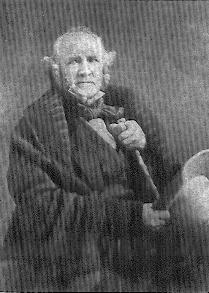
Sam Houston's career would then take one last extraordinary turn. Elected Governor of Texas in 1859, he absolutely refused to assent to Texas leaving the Union and joining the Confederacy. The last event in his political life was then his removal from office in 1861, so that Texas could go ahead and leave the Union anyway. Houston died before the following contest was decided. Houston turned down an  offer from President Lincoln for federal troups to prevent Texas secession and subsequently voiced some support for the Southern Cause, but his main concern seems to have been to avoid internal strife in Texas (there was some killing of Unionists) and in general he remained to the end a Jacksonian, i.e. Unionist, Democrat, deeply grieved at the turn of events.
offer from President Lincoln for federal troups to prevent Texas secession and subsequently voiced some support for the Southern Cause, but his main concern seems to have been to avoid internal strife in Texas (there was some killing of Unionists) and in general he remained to the end a Jacksonian, i.e. Unionist, Democrat, deeply grieved at the turn of events.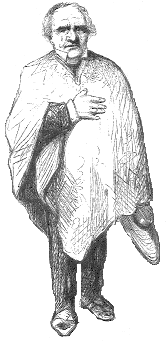
Until the end of his life, Houston liked to be shown in his Cherokee blanket. Thus we see him photographed as an old man above and even in the political cartoon from Harper's Weekly at left. The blanket is still there on the statue by the great German sculptress Elisabet Ney, done by her together with one of Stephen F. Austin to represent the State of Texas in the Capitol of the United States of America. Copies also stand in the Capitol of the State of Texas, near the famous painting of the Surrender of Santa Anna, where we see Houston, wounded, propped up against a tree. Ney's home and studio still stand in Austin, containing many of the original sculptures that she had done in Germany and later brought over to Texas. Her work included busts of Otto von Bismark, Giuseppe Garibaldi, Arthur Schopenhauer, King Ludwig II "the Mad" of Bavaria, William Jennings Bryan, and many others. Texas history certainly has its colorful and outrageous aspects. One of my favorites is the story of Governors "Ma" and "Pa" Ferguson. "Pa" Ferguson, James E., was impeached and removed from office in 1917. Later his wife, Miriam A., "Ma" Ferguson, ran for Governor herself and won. She returned again in 1933, just in time, we might remember, for the end of Prohibition. There are thus two portraits of Fergusons in the Rotuna of the Texas State Capitol, but both of them are of Miriam, for her non-consecutive terms. James, impeached, is not shown. They are buried together in the Texas State Cemetry in Austin.
The State Cemetry also has the grave of Albert Sydney Johnston, who had been the Secretary of War of the Republic of Texas and then was killed at the Battle of Shiloh in 1862. Johnston's monument, showing him as he was carried off the battlefield, with the flags of Texas and the Confederacy across him, was also sculpted by Elisabet Ney.
Among the Governors we also have James Stephen Hogg. In 1891 Hogg, riding a wave of populist resentment against railroads, got the Texas Railroad Commission established to regulate shipping rates within Texas. In 1901 the Texas oil boom began, and in 1917 the Commission was given powers over the transport of oil. In the 1930's this power was used to limit oil production and drive up prices -- another New Deal era attempt to create prosperity by protecting producers. This was of no benefit to consumers, only to rent seekers, and of course did nothing to create prosperity. Hogg was, appropriately, a stout man, and he named his daughter "Ima." She lived until 1975. The story is told that she had a sister "Ura," but that is not true -- and her three brothers did not have names that sounded like wordplay. We also see John Connally, who was in the same car and was shot along with President John F. Kennedy in 1963. George W. Bush, of course, became the 43th President of the United States. Perhaps the best that can be said for him is that, considering how much the Left hates him, he must be doing something right. The Jorge Arredondo Restaurants
Governors of New Mexico (1598-present)
Spanish and Mexican Governors of Texas (1691-1836)
California, Governors of California (1769-present)
The Kings, President, & Governors of Hawai'i (1795-present)
Spanish & Portuguese Colonial Possessions
The television series Alice ran from 1976 to 1985. It was based on the fine movie Alice Doesn't Live Here Anymore [1974]. The show subsituted Linda Lavin for the part that Ellen Burstyn played in the movie. The most memorable line in the movie may have come from a young Jodie Foster shouting, "So long, suckers," while leaving a police station. New Mexicans were annoyed with the movie for another line, "Socorro sucks," spoken by Burstyn to express her unhappiness and dislike at living in Socorro, New Mexico, from which she flees after her husband is killed in an accident -- ending up at "Mel's Diner" in Arizona. The scenes supposedly taking place in Socorro, however, were actually filmed in Tucson. Besides the gratuitous denigration of Socorro, there is some nice irony in the put-down, since socorro is Spanish for "succor, help, aid, assistance, relief." The place got its name in 1598 when Juan de Oñate emerged from the dangerous Jornada del Muerto desert and found, well, succor.
I only watched the television show fitfully, but I happened to see one of the characters, another waitress named "Flo," talk about when she was working at the "DMV" (Department of Motor Vehicles) in Texas. Unfortunately, there wasn't any agency called the "DMV" in Texas at the time. Alice, of course, was filmed in Los Angeles; and apparently no one involved in the production, who was in a position to make any difference, knew that Texas did not have identical State agencies to California.
I saw this as an example of the ignorance and probably contempt of Hollywood for actual places like Texas. They didn't know and couldn't be bothered to check whether there was a DMV in Texas. California and New York had a "DMV"; surely all other States did also. But even New Jersey as a Motor Vehicle Commission (MVC), not a DMV -- although we also know how New Yorkers view New Jersey.
The situation in Texas was based on some different principles than in California. Vehicle registration was handled at the County level and treated like property taxes, so annual registration fees didn't even go to the State. This was the case in much of the South, which is why some Southern States actually have the name of the County on license plates (I've noticed this at least in Georgia and Florida). Texas didn't do that, but you could tell the region of the State by the first letter on the license. The plates from Travis County, which contains Austin, began with "A." On the other hand, drivers' licenses were handled by a State agency, the Department of Public Safety (DPS), which also contains the Texas Highway Patrol and the Texas Rangers. It is also common for Southern States to have a "DPS."
Texas has now gone and spoiled this. There is today indeed a Texas Department of Motor Vehicles (TxDMV). It was created by the State in 2009. However, as far as I can tell, nothing otherwise has been changed. Registrations are still done by the Counties, and licensing is still done by the DPS. The Texas DMV thus does something that is a bad sign for a place like Texas: adding a new and unnecessary level of Government to fulfill some minor function that previously was never really needed. The next thing, the DMV will take on powers like prohibiting smoking in cars with children.
Having moved to Austin in 1975, when it was at the time no larger than Albuquerque (now it is larger than the choked and moribund San Francisco), I have witnessed at least one visible and distressing sign of growing government. The few blocks between the State Capitol north to The University of Texas, originally all private buildings, still had a few of them left and a good bit of empty space, used for parking, in 1975. Since then, the area has all but filled up with new State office buildings. These are done in handsome pink Texas granite, but their very existence is testimony to the cancerous growth of government, even in a low government State like Texas. The sudden appearance of a Texas DMV would seem to be part of this phenomenon, adding its own example to the principle of redundancy upon which so much American government is based -- I might suggest renaming it the "Department of Motor Vehicles Department" (DMVD).
Even worse, some Texans may have defensively decided that since California and New York have a DMV, then Texas, to be as sophisticated and modern, must have one also. In this direction also lies ruin. With a new Governor taking office in 2015, Texas would be well advised to now abolish this agency and its nine member "Board."
Not many years ago the Bushes would have seemed very minor players in American politics. George H.W. Bush knocked around in various appointments, head of the C.I.A., de facto American ambassador to China, and other things. He was more an appointee type than a politician type. He posed just enough of a challenge for Ronald Reagan in 1980, however, that Reagan picked him as Vice-President. This, indeed, was another appointment, and Bush was a good team player, although Reagan picked him to represent a number of things that Reagan did not represent, like the "moderate" old Northeast, Country Club Republican elite. When Reagan's momentum got Bush elected President in his own right in 1988, Bush returned the favor by calling for a "kinder, gentler" nation -- apparently kinder and gentler than what Reagan had envisioned. Since Bush, in turn, wasn't interested in the "vision thing," he was duped by the Democrats, went back on his "no new taxes" campaign pledge, failed to articulate that the recession he was blamed for was already over, and lost to Bill Clinton in a vote that was swung by Ross Perot.
That might have been the end of it. But the most unlikely thing happened. His eldest son, George W. Bush, recovered from a drinking and possibly a drug problem, and fully as inarticulate as his father, had beaten what seemed like a popular Governor of Texas, Ann Richards, and then went on to beat Bill Clinton's own version of George H.W. Bush, Al Gore, in 2000. W.'s brother, Jeb, had by then also won the Governorship of Florida. Suddenly, this looked like a major political family. And for all his faults, W. then handsomely won reelection in 2004. This all threw the Left into a frenzy. The connection of the Bushes to international Nazi conspiracies, starting with H.W.'s father Senator Prescott Bush, is now conventional wisdom in the blame-American-first crowd and on the lunatic fringe, both Left and Right. The best that can be said for the Bushes, indeed, is how much the Democrats and the Left hate them. They must be doing something right. Apart from aggressively fighting Terrorism, however, which has given Tendured Radicals the chance to relive their youth by cooperating in a second great defeat of Amerika (as in Vietnam), it is hard to find very much good in the Bush record or program. Modest tax cuts were good, proposals to reform Social Security were good, but then the proposals went nowhere, and all the rest of the Bush program has been just more Big Spending, Big Government, Nanny State New Dealism. Not big enough, to be sure, or socially radical enough, to make any Democrats happy, but in truth simply a modest "me-too-ism" to Democrat government. This was "compassionate conservativism," which again seems to mean something not as mean -- or as consistent, American, or good -- again, as Ronald Reagan's conservatism. The Bush Justice Department couldn't even come out against "affirmative action" preferential policies, and W. actually signed the fraudulent McCain-Feinfold "campaign finance reform" bill which assaulted the First Amendment (perhaps in the expectation that the Supreme Court would strike it down, which it didn't). The result has been disaffection among conservatives and little but disgust among libertarians. To the Democrats, any stick with which to beat Bush has become welcome, even if it is over counter-terrorism measures (often those actually used by Bill Clinton and earlier Presidents) that so far may have prevented a repeat of 9/11. One often wonders if the Democrats actually care whether there is another 9/11 or not, or if they would welcome it as finally discrediting Bush.
Nevertheless a Bush political future might have continued continue in the form of the attractive sons of Jeb Bush. Other family members represent personae of interest. Jeb's daughter Noelle has ended up in some trouble over drugs, which should make the Drug Warriors happy. Brother Neil's daughter Lauren became a fashion model, running with the "beautiful people" crowd of the Hiltons and Hearsts. The public presence of the Bushes thus promised to grow for a good time after the retirement of W.
In 2015 Jeb Bush, not his sons (of whom no more has really been heard), jumped to the Presidential race. A great deal of sentiment was that we want a dynasty of Bushes no more than a dynasty of Clintons; and Jeb himself displayed all of the stigmata of a Country Club "moderate" Republican -- of the sort that lost the last two Presidential elections. Nevertheless, at first, he seemed to have a leg up in the polls and seemed to be the man, at least initially, for the others to beat. He had lots of money. But he ended up beaten by Donald Trump, who then defeated the Democrat dynastic candidate of Hillary Clinton, and who accurately described Jeb as "tired." Jeb had so little energy that audiences didn't know when to clap; and on one memorable and humiliating occasion, Jeb had to actually ask them to do so. Unlike Hillary, Jeb at least had the humility to quietly disappear after his defeat. Other Bushes have so far displayed similar modesty.
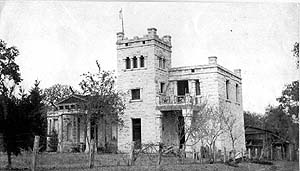 Rumor attributed to her an affair with Ludwig.
Rumor attributed to her an affair with Ludwig.
Copyright (c) 1997, 1999, 2000, 2001, 2005, 2006, 2007, 2014, 2016, 2021 Kelley L. Ross, Ph.D., Postumus Friesianorum, All Rights Reserved

Sam Houston; The Presidents and Governors of Texas;
Note on the Texas DMV

The Bushes




American Families in Business and Politics The Du Ponts The Astors The Vanderbilts The Johnsons The Rockefellers The Roosevelts & Delanos The Hearsts The Kennedies The Hiltons The Fords The Bushes Copyright (c) 2006, 2015, 2018 Kelley L. Ross, Ph.D., Postumus Friesianorum, All Rights Reserved